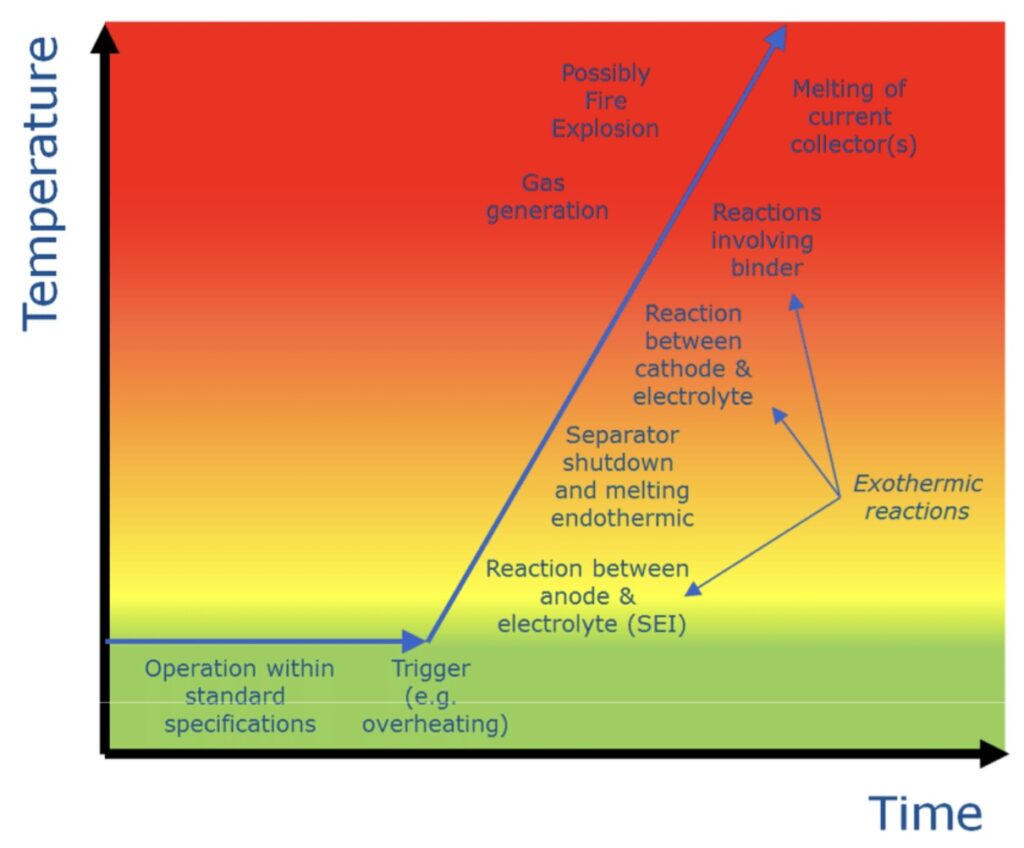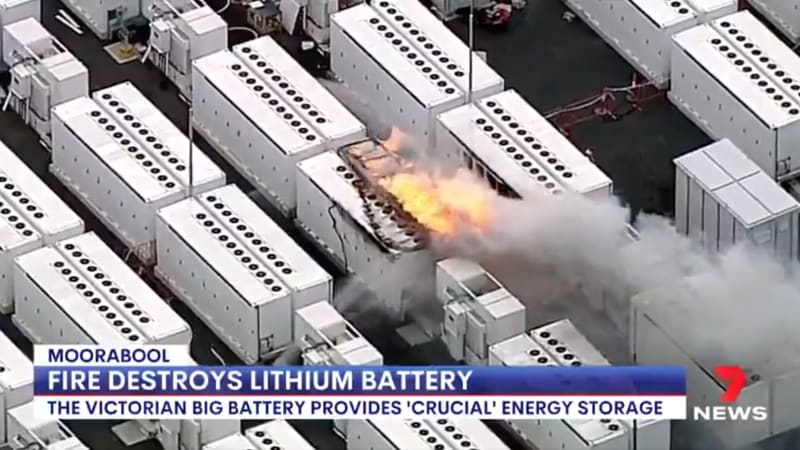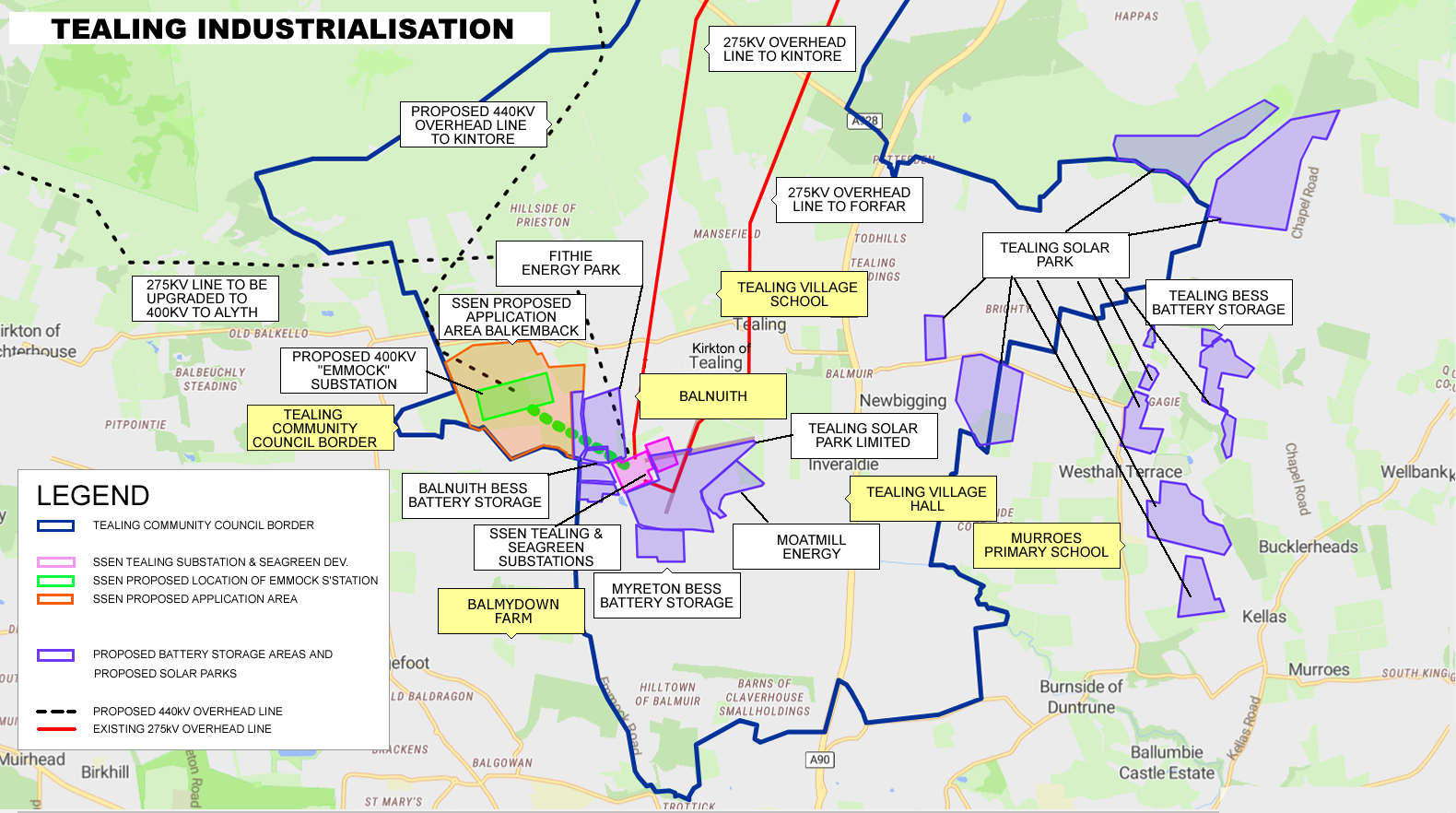BESS Fire Risk
Why are lithium fires and thermal runaway so dangerous
Lithium-ion fires are notoriously difficult to extinguish. Lithium does not need oxygen to burn. Often they are just left to burn out, as dosing them for several days with water causes toxic fire-water runoff which contaminates land and water ways. However, leaving them to burn out means that huge clouds of toxic gas are released into the air damaging human health and soil.
Huge amounts of water are require for battery fire extinction. It is recommended to use 2000L/min for a minimum of 2 hours
63 major energy storage failure events have been documented globally since 2011. In many of those, people have sustained significant, life changing injuries.
TnT equivalent to 560 battery BESS is 1500 tons
The main danger of LIB failure is thermal runaway. This happens when a battery becomes unstable and chemical reactions produce heat and gases. Heat in turn speeds up these reactions, producing more heat and gases.
In thermal runaway and prior to ignition, LIBs produce a vapour cloud consisting of: hydrogen (ca. 30 – 50%), carbon monoxide, carbon dioxide, hydrogen fluoride, hydrogen chloride, hydrogen cyanide, small droplets of the organic solvents, ethane, methane and other hydrocarbons, sulphur dioxide and nitrogen oxides (source The Vapour Cloud: when lithium-ion batteries are in thermal runaway, Prof. Paul Christensen). More information on BESS safety can be found here in a paper by Prof Allison and Dr Fordham.

Typical evolution of thermal runaway in a Li-ion cell. The scales are given in arbitrary units and the reactions shown separately may occur simultaneously (Pfrang, Ruiz, 2018 DOI:10.2760/096975)
At present the Health and Safety Executive (HSE) has chosen to exempt itself from regulating BESS, choosing to define battery systems as “articles”. A strong case has been made (Fordham, 2021) that the Control of Major Accident Hazards (COMAH) Regulations should be applied to BESS, as the quantities and types of dangerous substances released during a BESS thermal runaway fall under the aegis of COMAH. A House of Commons Private Member’s Bill (Hansard, 2023) received its Second Reading, categorising battery storage facilities as hazardous, so that the Environment Agency, the Health and Safety Executive and the fire and rescue services would be statutory consultees when planning applications are considered.
Here are some incidents worldwide:
2018-2019 South Korea; up to 30 LiBESS on fire or exploded.
2019 Surprise Arizona: 3 first responders injured, 2 very badly sustaining traumatic brain injury (one was blown 75ft in the air). 9 first responders contaminated with hydrogen cyanide.
2020, Liverpool BESS
2021 Beijing: 25MWh LiBESS on shopping mall: 3 killed, 1 injured. VCE
2021 Moss Landing, California: “world’s biggest battery storage facility” cells go into thermal runaway (4 Sep 2021)


